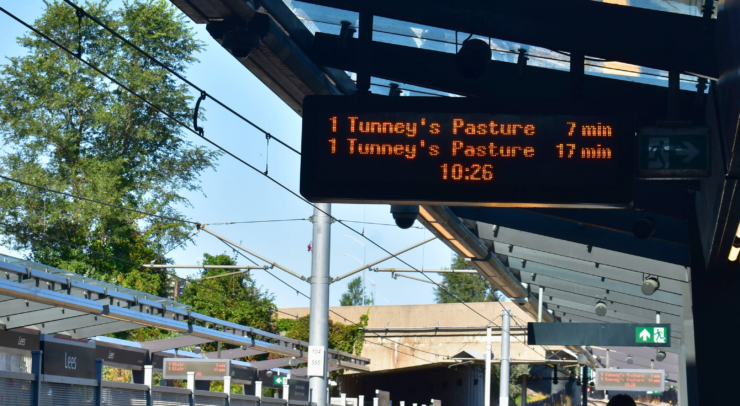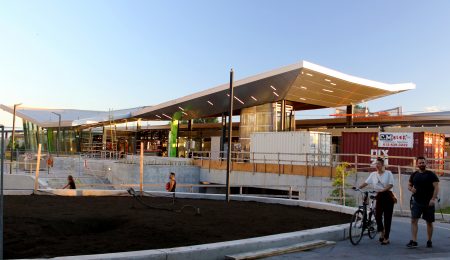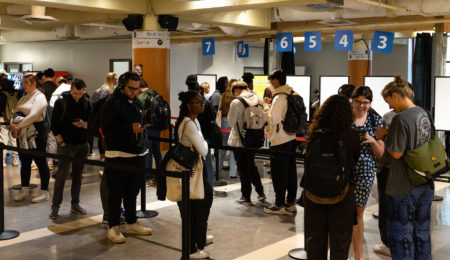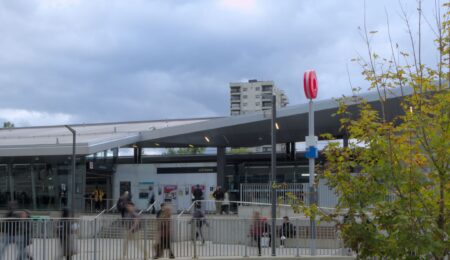Fare hikes and transit cuts are threatening students — and won’t do much to keep OC Transpo out of its woes
As students head back to classes, OC Transpo has prepared some, shall we say, interesting ways to greet students back onto the network. Frequency on the O-Train has been cut down from a train every five minutes to a train every 10 minutes during off-peak hours, which the city considers between 9 a.m. and 3 p.m., and from 6:30-11p.m. Not only that, but staff have been out en masse conducting a fare compliance blitz through the month of September.
These actions aren’t random events just to spice up your commutes — they all stem from a mentality of fiscal weariness that permeates transit planning in this city, born from the fact that the Transit budget is in a dire state. City staff are projecting a $25 million deficit and are anticipating the 2025 deficit to be as high as $120 million, a financial bullet that has to be dealt with. But this Scrooge-like way of addressing budget concerns will put customers in the line of fire, and threaten to plunge OC Transpo into a vicious cycle.
A huge part of the problem comes from how much ridership has fallen since the shutdowns of the COVID-19 pandemic. It still remains well below pre-COVID levels, with LRT ridership being particularly bad. This brings down a key source of revenue for the network, which is transit fares themselves. The provincial fare average provides around a third of revenue but in Ottawa it only accounts for 19 per cent of revenue.
This provokes a knee-jerk reaction to find ways to economize within the system, including the frequency reduction on the O-Train and the fare blitz. And in the 2025 budget directions, there are proposals to raise fares by as much as 75 per cent, further cuts to the system, or deferrals of capital investments.
But do you see something wrong here? All of these proposals, while helping the bottom line, work to make the quality of OC Transpo worse and drive people away from the system. Even with LRT cuts supposedly helping maintain current capacity, the problem is spelt out right there. It is all about putting the system on life support, instead of considering how making the system more frequent, more reliable could attract more people to use it.
This is a particularly dangerous way of thinking because it creates what is known as a transit death spiral. Ridership is low, money gets tight, so the fares are jacked up and service is cut. That leads to worse service, less ridership, money gets tighter, and so the fares go up again; service is slashed even more, and it keeps on going on and on, down and down.
And it’s not like there aren’t any other funding streams the city could consider. Property taxes have been kept well below the rate of inflation and that of other Canadian cities. The city has also spent copious amounts of money on new road expansions and financing new suburban construction instead of dense, efficient developments that could also serve as being transit-oriented.
But mention any of these solutions to the city council, and you might as well have committed blasphemy in a 16th century pioneer village. The mayor has made it a priority to keep tax increases low, only recommending an increase of 2.9 per cent across the board and keeping a transit levy hike to no further than 37 per cent (which would represent a growth of 7 per cent on tax bills). Councillors from more rural and suburban wards of the city will say how they fear taxing too high will be asking too much of residents facing a cost-of-living crisis.
What fails to be mentioned is whether the city is asking too much of transit riders by making them pay higher and higher fares, or whether it hurts residents that they keep being late to appointments, to work, to school. It isn’t considered how residents are harmed by having to pay more to use a vehicle, pay for parking, pay for gas, get stuck in worsening traffic, nor how good, reliable transit helps boost development and the economies of cities.
Ultimately, the mayor and council face a choice: either they can work to boost transit in the city and make a worthwhile investment into a public good, or they can continue to neglect the system and fall into the transit death spiral.
For now, to everyone who still uses transit: brace yourselves; we’re still in for a bumpy ride.





